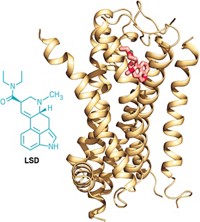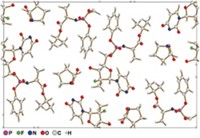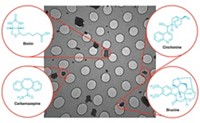Advertisement
Grab your lab coat. Let's get started
Welcome!
Welcome!
Create an account below to get 6 C&EN articles per month, receive newsletters and more - all free.
It seems this is your first time logging in online. Please enter the following information to continue.
As an ACS member you automatically get access to this site. All we need is few more details to create your reading experience.
Not you? Sign in with a different account.
Not you? Sign in with a different account.
ERROR 1
ERROR 1
ERROR 2
ERROR 2
ERROR 2
ERROR 2
ERROR 2
Password and Confirm password must match.
If you have an ACS member number, please enter it here so we can link this account to your membership. (optional)
ERROR 2
ACS values your privacy. By submitting your information, you are gaining access to C&EN and subscribing to our weekly newsletter. We use the information you provide to make your reading experience better, and we will never sell your data to third party members.
Analytical Chemistry
X-Ray Technique Obtains Protein Structures From Smallest-Ever Crystals
Advance could cut the time it takes to prepare medicinally relevant proteins for structure determination
by Carmen Drahl
December 23, 2013
| A version of this story appeared in
Volume 91, Issue 51
Growing crystals big enough to obtain a protein structure by X-ray crystallography can take years, as practitioners of the art know all too well. This is especially true of G protein-coupled receptors (GPCRs), which are targets for as many as 30% of prescription drugs. Such waits may now become a thing of the past, thanks to a team led by Vadim Cherezov of Scripps Research Institute California. The researchers obtained a high-resolution structure of a GPCR—the serotonin receptor—from crystals as tiny as 5 μm across (Science 2013, DOI: 10.1126/science.1244142). The key to the Scripps team’s success is a new sample injection system. It streams many tiny crystals, embedded in a viscous gel that mimics a cell membrane, into the path of an X-ray free-electron laser beam. The X-ray source doles out radiation in 50-femtosecond bursts to minimize crystal damage. The new serotonin receptor structure is nearly identical to established structures, but it has differences in some salt bridges and side-chain conformations. The structure was obtained at room temperature rather than the typical cryogenic temperatures, Cherezov says, so it may more accurately represent the GPCR’s natural state. Cherezov’s collaborators at Arizona State University have filed a patent application on the injection system.





Join the conversation
Contact the reporter
Submit a Letter to the Editor for publication
Engage with us on Twitter